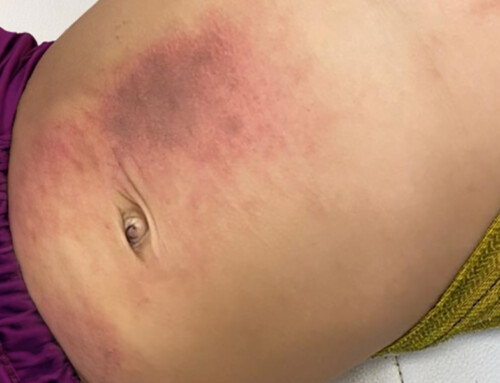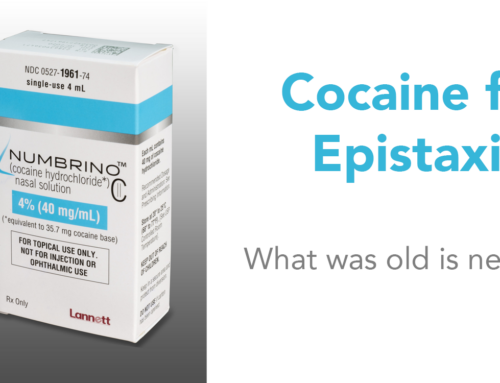
 The Case
The Case
You have a 54-year-old female who presents to the emergency department with a chief complaint of “just feeling out of it.” She has felt “off and on” for the past 12 hours and has had an occasional cough with some sputum production along with “the shakes and chills.” She also feels as if her heart was “going at a mile a minute” and because of this, she is very much out of breath.
She has a past medical history of hypertension and she has been compliant with her medications. She also tells you that she has had recent blood work ordered by her primary care physician that was highly suspicious for “some sort of thyroid disorder”, but the results have not been made known to her yet.
Physical Exam
Her vital signs are blood pressure of 184/106 mmHg, heart rate of 130 beats per minute, respiratory rate of 22 breaths per minute, and temperature of 102.7°F. She seems relatively anxious on physical exam, and you note that she is diaphoretic. An EKG is ordered, revealing an irregularly irregular rhythm, and an urinalysis is conducted, showing many bacteria. You decide to pan-culture her and determining that she has no known drug allergies, you order a combination of piperacillin/tazobactam 4.5 g IV and tobramycin 500 mg IV as one-time doses for her suspected urinary tract infection (which you consider at this point to be urosepsis).
You Avoid Premature Closure
Yet to you, something does not seem right. Her overall presentation does not seem to add up in being secondary to urosepsis. Is there some other underlying issue that is taking place? In addition to the labs you have already ordered for our patient, you quickly decide to add a thyroid function panel, just in case.
Thyroid Storm and Endocrine Emergencies: Sepsis Mimics
Endocrinologic emergencies often fall at the wayside and are not generally considered as a possible diagnosis up front in patients in the emergency department who meet the criteria for systemic inflammatory response syndrome (SIRS). It becomes too easy to label them as “septic”, and we may forget that endocrinologic emergencies, specifically thyroid storm, can present in very much the same way. To me, it really is the missed mimic of several disease states, as described above in our possibly uroseptic patient.
Diagnosis of thyroid storm can be somewhat of a challenge because of this, but a scoring system developed by Burch and Wartofsky 1 can assist in determining the likelihood of thyroid storm in patients based on presenting signs and symptoms. A previous ALiEM blog post further discusses some of the nuances associated with the diagnosis of thyroid storm.
In the case of our patient above, both laboratory parameters and the overall clinical picture confirm our suspicion of thyroid storm. The question is now —
How do we treat thyroid storm? 3B’s of Thyroid Storm “Soccer”
You can think of the mainstay treatment strategies of thyroid storm based on three main goals (what I like to call the 3 B’s of thyroid storm soccer):
- Block the production and release of thyroid hormone (preventing the opposing team from getting the ball and scoring)
- Block the sympathetic outflow (preventing the soccer ball from going out of bounds)
- Block peripheral conversion of T4 to T3 (preventing penalty kicks)
Specific Therapeutic Agents
The agents are discussed below along with some EM pharmacy pearls that may be beneficial to those of you practicing in the emergency department.
1. Thionamides
- Mechanism of action: Inhibit thyroid peroxidase, an enzyme involved in the production of T3 and T4 through the iodination of tyrosine residues on thyroglobulin
- Agents: propylthiouriacil (PTU) and methimazole (MMI)
- Dosing
- PTU
- Loading dose: 600 to 1000 mg PO
- Maintenance dose: 200 to 250 mg PO q4h
- MMI
- Loading dose: 20 to 25 mg
- Maintenance dose: 20 to 25 mg PO q4h
- PTU
- No head-to-head trials have shown any benefit of using one thionamide over another in the management of thyroid storm
- Additional benefit of PTU in thyroid storm:
- Inhibition of the peripheral conversion of T4 to T3 (3rd “B”)
- Alternative routes of administration:
- PTU and MMI can both be administered through the rectal route as a suppository and retention enema
- Shown to have good response in several trials 2–4
- Intravenous (IV) thionamides are currently not commercially available in the United States
- IV formulation of MMI is available in Europe
- Success reported in case reports and case series of treating thyroid storm with IV MMI compounded formulations 5,6
- PTU and MMI can both be administered through the rectal route as a suppository and retention enema
- Pregnancy considerations:
- PTU is generally preferred over MMI
- Adverse effects:
- PTU: black box warning for severe and/or life-threatening hepatotoxicity issued by FDA in 2010
- Agranulocytosis:
- Can occur at any point during treatment
- Tends to be dose-related with MMI, unlike PTU
- Granulocyte colony-stimulating factors (G-CSFs) can be used in the management of thionamide-induced agranulocytosis
2. Inorganic iodine
- Used to prevent the release of pre-formed thyroid hormone from the thyroid gland
- Various formulations:
- Saturated solution of potassium iodide (SSKI): 5 drops PO, NG, or PR q6h
- Lugol’s solution: 8 drops PO, NG, or PR q6h
- Sodium iodide: 500 mg IV q12h
- Administration of inorganic iodine should be delayed for at least one hour after initiation of thionamide therapy
- Iodine load can serve as a substrate for thyroid hormone synthesis and exacerbate thyroid storm
- Iodine content of formations (NOTE: Solutions are not interchangeable.)
| Iodine Solution | Content of Iodine Per Drop* |
| SSKI | 38 mg iodine |
| Lugol’s Solution | 8 mg iodine |
| * Based on 20 drops per mL | |
- The dose is by the dropperful (as opposed to mL) of solution
- Dissolve the dose in solution of 3 to 4 ounces of milk, fruit juice, or water to ensure that the full dose is given and to mask the bitter taste
- If true allergy to iodine or contraindication to iodine therapy (e.g. amiodarone-induced thyrotoxicosis):
- Consider administration of lithium carbonate 300 mg PO or NG q6h
- Maintain lithium level within range of 0.8 to 1.2 mEq/L
3. Beta blockade
- Enhanced α- and β-adrenergic stimulation in the setting of thyroid storm leads to clinical manifestations
- Propranolol: most commonly used agent
- Inhibits peripheral conversion of T4 to T3 (3nd “B”)
- Effect not demonstrated considerably with other β-antagonists
- Blocks non-selective β-adrenergic receptors to allow for effective treatment of systemic effects, such as tremor, tachycardia, agitation, fever, diaphoresis, psychosis (2nd “B”)
- Dose: 60 to 80 mg PO q4h
- Proper dosing of propranolol is essential because of dose-dependent effects on inhibition of peripheral conversion of thyroid hormone (> 160 mg/day), and rapid metabolism of the agent in the setting of thyroid storm
- Alternative route of propranolol: IV formulation (determine availability at your institution)
- Two-step method for administration:
- Test dose: 0.5 to 1 mg as slow IV push administered over 10 minutes
- Subsequent doses: 1 to 3 mg IV over 10 to 15 minutes every few hours to desired effect with monitoring of cardiac rhythm
- Inhibits peripheral conversion of T4 to T3 (3nd “B”)
- Esmolol can be considered as an alternative agent
- Contraindications to beta blockade: guanethidine or reserpine with close monitoring for hypotension
4. Corticosteroids
- Depression of the hypothalamic-pituitary axis commonly occurs in the setting of thyroid storm
- Additional benefit: inhibition of peripheral conversion of T4 to T3 (3rd “B”)
- Hydrocortisone: loading dose of 300 mg IV followed by maintenance dose of 100 mg IV q8h (or dose equivalent)
5. Other Therapies
- Cholestyramine resin:
- Can be used to interrupt enterohepatic recirculation of thyroid hormone, leading to decreased circulating levels of thyroid hormone 7,8
- Dose: 4 g PO q6h
- Supportive measures
- Fluid resuscitation
- Dissipation of heat with various cooling modalities for hyperthermia control
- Benzodiazepines for control of agitation and to minimize sympathetic outflow
Additional Reading
Tenner AG, Halvorson KM. Endocrine causes of dangerous Fever. Emerg Med Clin North Am. 2013 Nov;31(4):969-86. PMID: 24176474.






